Preparing for competitive exams like OSSSC RI, ARI, Amin, SFS, and ICDS Supervisor requires a strong grasp of various subjects, including art and culture. Our curated set of the top 30 MCQs focuses on key topics such as Indian classical dances, significant historical monuments, renowned artists, traditional festivals, and cultural heritage sites. These questions are designed to test and enhance your knowledge, ensuring you are well-prepared for the exam. Practicing these MCQs will help you understand the diversity and richness of India’s cultural landscape, a crucial component of the general knowledge section
Top 30 Art and Culture MCQS For OSSSC RI,ARI, Amin, SFS, ICDS Supervisor
- Who among the following was known as the greatest poet and dramatist of the Gupta Period?
(a) Harisena
(b) Vishakhadatta
(c) Kalidasa
(d) Shudraka
Ans: (c) Kalidasa - Which of the following is not one of the major works of Kalidasa?
(a) Meghaduta
(b) Raghuvamsha
(c) Mrichchhakatika
(d) Abhijnanashakuntala
Ans: (c) Mrichchhakatika - Vishakhadatta’s famous play ‘Mudrarakṣhasa’ is about which historical figure’s rise to power?
(a) Chandragupta Maurya
(b) Samudragupta
(c) Harsha
(d) Ashoka
Ans: (a) Chandragupta Maurya - Which of the following Sanskrit poets wrote the epic poem ‘Kiratarjuniya’?
(a) Bhatti
(b) Bharavi
(c) Magha
(d) Bhasa
Ans: (b) Bharavi - Who authored the famous Sanskrit play ‘Mrichchhakatika’?
(a) Kalidasa
(b) Shudraka
(c) Harisena
(d) Vishakhadatta
Ans: (b) Shudraka - Which work is considered as one of the Sanskrit Mahavakyas and was written by Magha?
(a) Sisupala
(b) Raghuvamsha
(c) Vikramorvashi
(d) Nitishatak
Ans: (a) Sisupala - Who wrote the ‘Bhaṭṭikāvya’, also known as ‘Rāvaṇavadha’?
(a) Bharavi
(b) Bhatti
(c) Kalidasa
(d) Magha
Ans: (b) Bhatti - ‘Dasakumarcharita’, which details the adventures of ten princes, was written by which Gupta-era poet?
(a) Dandin
(b) Bhatrihari
(c) Harisena
(d) Kalidasa
Ans: (a) Dandin - Who among the following is credited with writing the ‘Vakyapadiya’, a treatise on Sanskrit Grammar?
(a) Bhatrihari
(b) Ishwar Krishna
(c) Vyasa
(d) Vatsyayana
Ans: (a) Bhatrihari - The author of ‘Nyaya Sutra Bhashya’ and the famous ‘Kamasutra’ was?
(a) Kalidasa
(b) Vyasa
(c) Vatsyayana
(d) Magha
Ans: (c) Vatsyayana - Giddha is a folk dance form associated with which region?
(a) Maharashtra
(b) Punjab
(c) Gujarat
(d) Rajasthan
Ans. (b) Punjab - Which folk dance is performed by Rajasthani women, often during festive occasions?
(a) Lavani
(b) Garba
(c) Ghoomar
(d) Dandiya Ras
Ans. (c) Ghoomar - Garba, a popular dance form performed in a circle, originates from which Indian state?
(a) Punjab
(b) Rajasthan
(c) Maharashtra
(d) Gujarat
Ans. (d) Gujarat - What is the male counterpart of Garba in Gujarat, known for its vigorous movements?
(a) Giddha
(b) Tamasha
(c) Dandiya Ras
(d) Yakshagana
Ans. (c) Dandiya Ras - Lavani, known for its powerful rhythm, is a traditional folk dance of which state?
(a) West Bengal
(b) Kerala
(c) Maharashtra
(d) Gujarat
Ans. (c) Maharashtra - Nautanki, a form of folk theatre, is most popular in which of the following regions?
(a) Punjab
(b) West Bengal
(c) Rajasthan, Uttar Pradesh, and Bihar
(d) Gujarat
Ans. (c) Rajasthan, Uttar Pradesh, and Bihar - Bhavai, a traditional form of folk drama, is predominantly performed in which state?
(a) Gujarat
(b) Tamil Nadu
(c) Karnataka
(d) Maharashtra
Ans. (a) Gujarat - Which folk dance-drama form is closely associated with the state of Karnataka and involves string puppetry?
(a) Ghoomar
(b) Giddha
(c) Gombeyatta
(d) Jatra
Ans. (c) Gombeyatta - Yakshagana, a traditional theatre form, has two distinct styles. Which of the following is characteristic of the Tenkutittu style?
(a) Use of Karnataka chande drum
(b) Shorter and more modern
(c) Similar to Kathakali in costumes
(d) Popular in Northern Karnataka
Ans. (c) Similar to Kathakali in costumes - Theyyam, a vibrant and ritualistic dance form, is performed in which Indian state?
(a) Kerala
(b) Tamil Nadu
(c) West Bengal
(d) Odisha
Ans. (a) Kerala - Which period is known for the earliest evidence of paintings in India?
(a) Lower Palaeolithic
(b) Middle Palaeolithic
(c) Upper Palaeolithic
(d) Mesolithic
Ans. (c) Upper Palaeolithic - Who was the first archaeologist to discover rock paintings in India?
(a) V S Wakankar
(b) Archibald Carlleyle
(c) John Marshall
(d) Mortimer Wheeler
Ans. (b) Archibald Carlleyle - The rock shelters at Lakhudiyar, Uttarakhand, contain paintings primarily in which colors?
(a) Red and Yellow
(b) Black and White
(c) White and Red Ochre
(d) Green and Blue
Ans. (c) White and Red Ochre - The Bhimbetka paintings can be categorized into how many periods?
(a) 5
(b) 6
(c) 7
(d) 8
Ans. (c) 7 - What is the primary subject of the paintings found in the Kupgallu, Piklihal, and Tekkalkota sites?
(a) Religious rituals
(b) Hunting scenes
(c) Geometric patterns
(d) Animals and stylized humans
Ans. (d) Animals and stylized humans - Which material was most commonly used to obtain red color in prehistoric paintings?
(a) Limestone
(b) Chalcedony
(c) Haematite
(d) Plant fiber Ans. (c) Haematite - The Bhimbetka caves were continuously occupied from approximately:
(a) 100000 BC to 1000 AD
(b) 50000 BC to 500 AD
(c) 25000 BC to 2500 AD
(d) 1000 BC to 1000 AD
Ans. (a) 100000 BC to 1000 AD - Which period in Bhimbetka is known for having the largest number of paintings?
(a) Upper Palaeolithic
(b) Mesolithic
(c) Chalcolithic
(d) Neolithic
Ans. (b) Mesolithic - The paintings in Bhimbetka often depict which of the following?
(a) Religious ceremonies
(b) Abstract designs
(c) Household scenes
(d) Political events
Ans. (c) Household scenes - What was the likely purpose of many of the cave paintings, as suggested by their locations?
(a) Decoration of homes
(b) Keeping a journal of events
(c) Religious or ritualistic use
(d) Educational purposes
Ans. (c) Religious or ritualistic use





